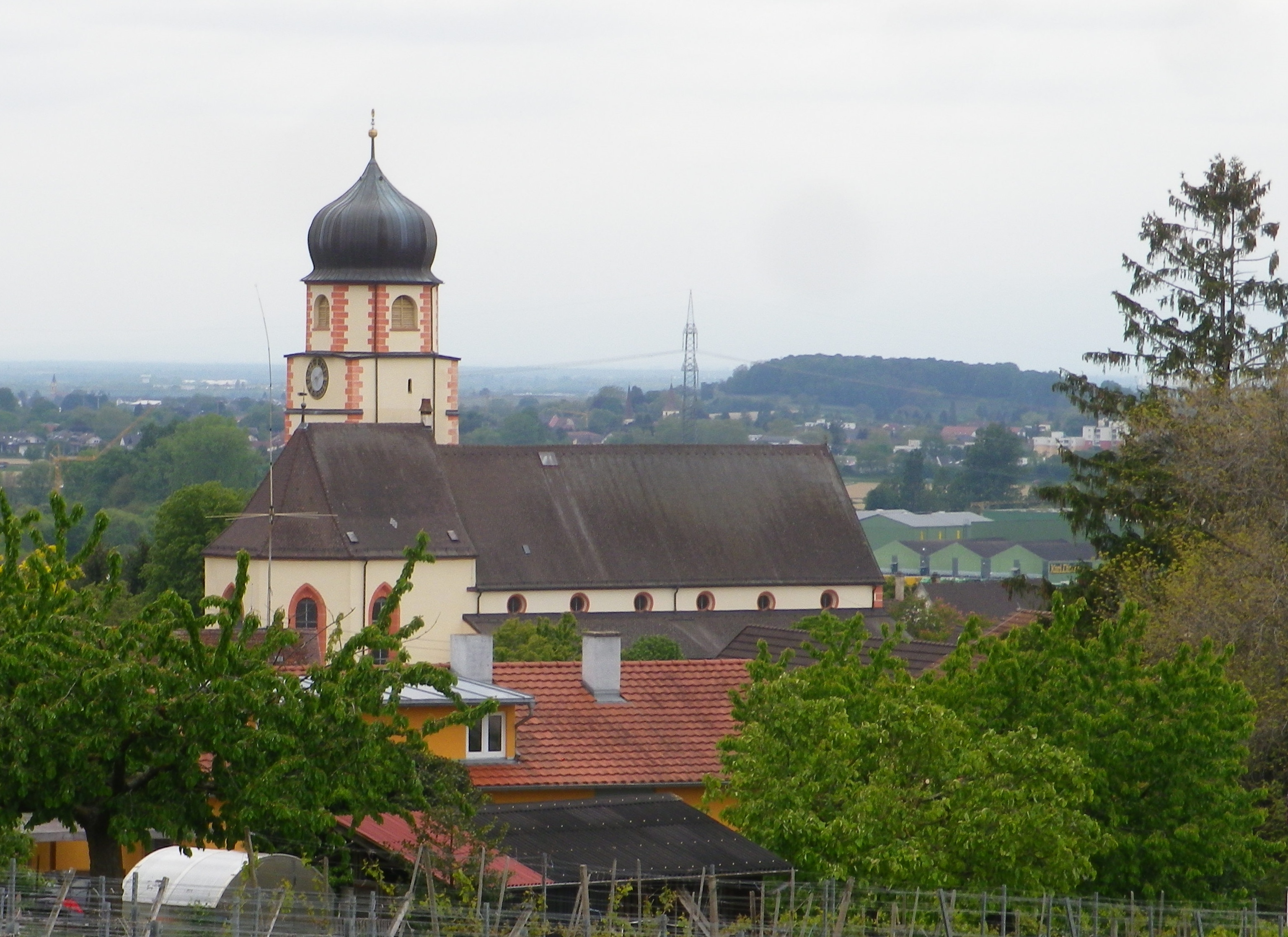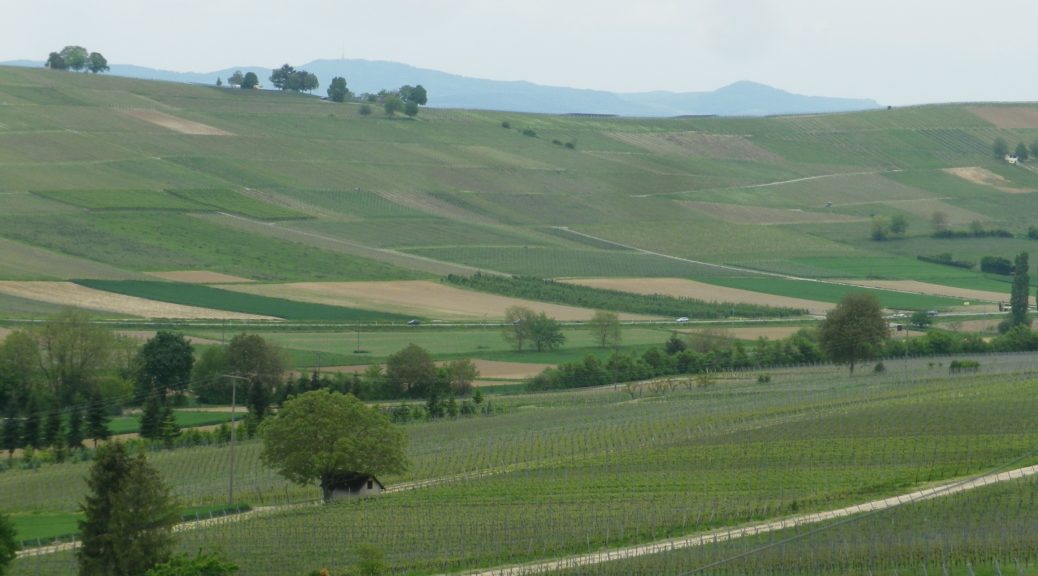Sometimes pilgrimages bring the pilgrims making the journey closer to heaven. Me, I just felt closer to heaven merely viewing the wide vistas from one of the Markgraeflerland district’s venerated vineyards, passing through old forests, eerily quiet in the face of an impending storm, and confronting the vestiges of pilgrimages past and present. This hike truly was more than just a hiking experience. It synthesized much of what I look for in the vineyard or wine trails I select.
In the first place, the hike proceeded through a few different vineyard areas. The first was the Batzenberg, rising uniquely outside the village, supporting almost nothing but vines on its slope. It is a good, reliable area for vines. Along with the Oberduerrenberg vineyard, that the trail subsequently traversed, these two vineyards represented some of the best parcels in the area. I liked them both for two very different reasons. From the top of the Batzenberg, one could almost feel on top of the world. With nothing but vines, the far-reaching vistas were impressive.
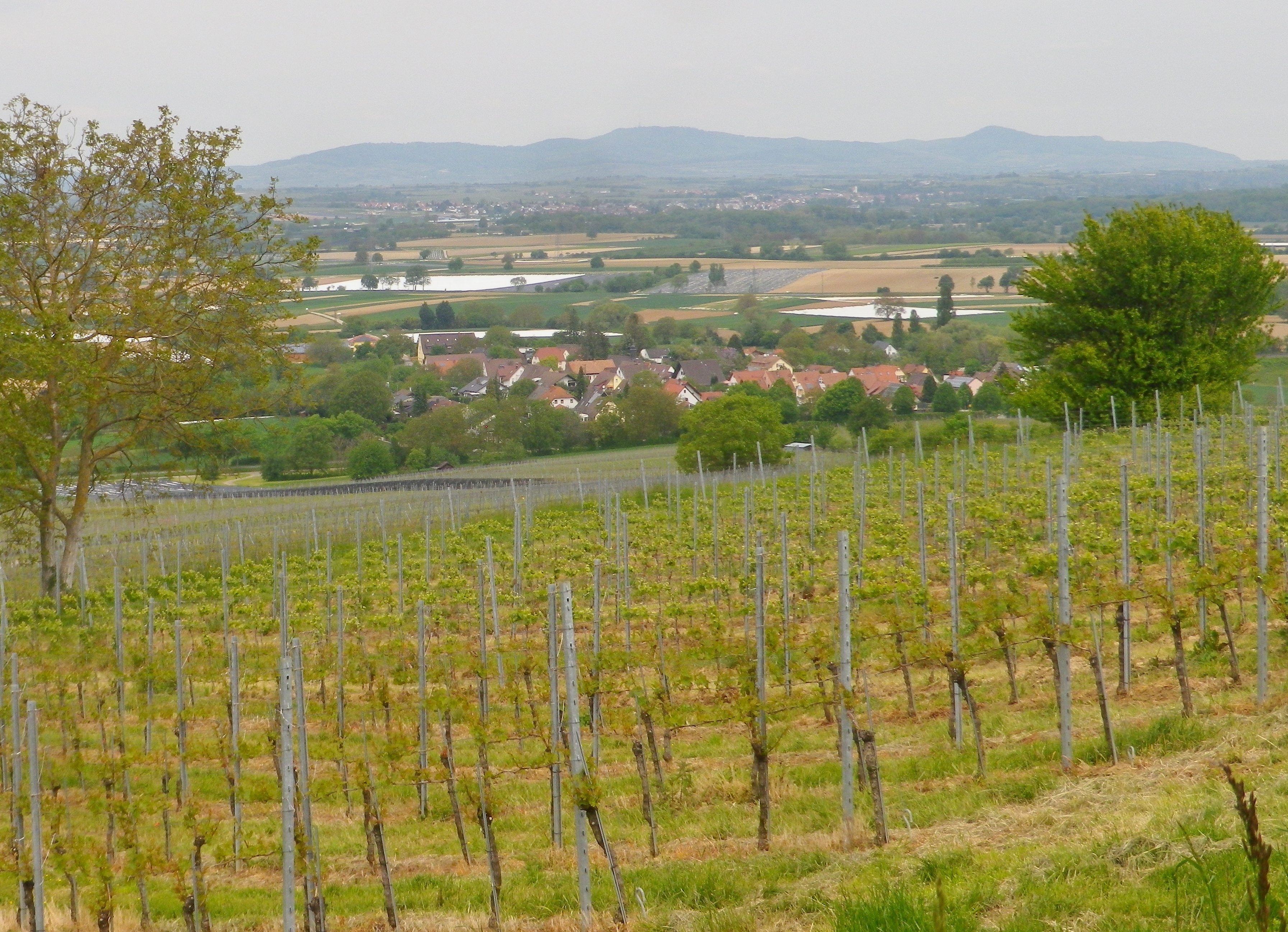
Here, I saw my first my first signs of pilgrimages. One, a pilgrimage trail for fans of Markgraeflerland wines, was my old favorite, the Wiiwegli, whose secret corners I remember so fondly. The other sign noted the Way of Saint James in this part of Germany. The Way, is in fact many trails, on both sides of the Rhine, all leading to the French Way through Pyrenees passes by Saint Jean Pied de Port, ultimately ending in Santiago de Compostela, Spain. While I was enthralled that throughout history, past and present, thousands of people had been on this trail before me, I was paying homage to the grapes that day. So, I continued on the Batzenbergrunde.
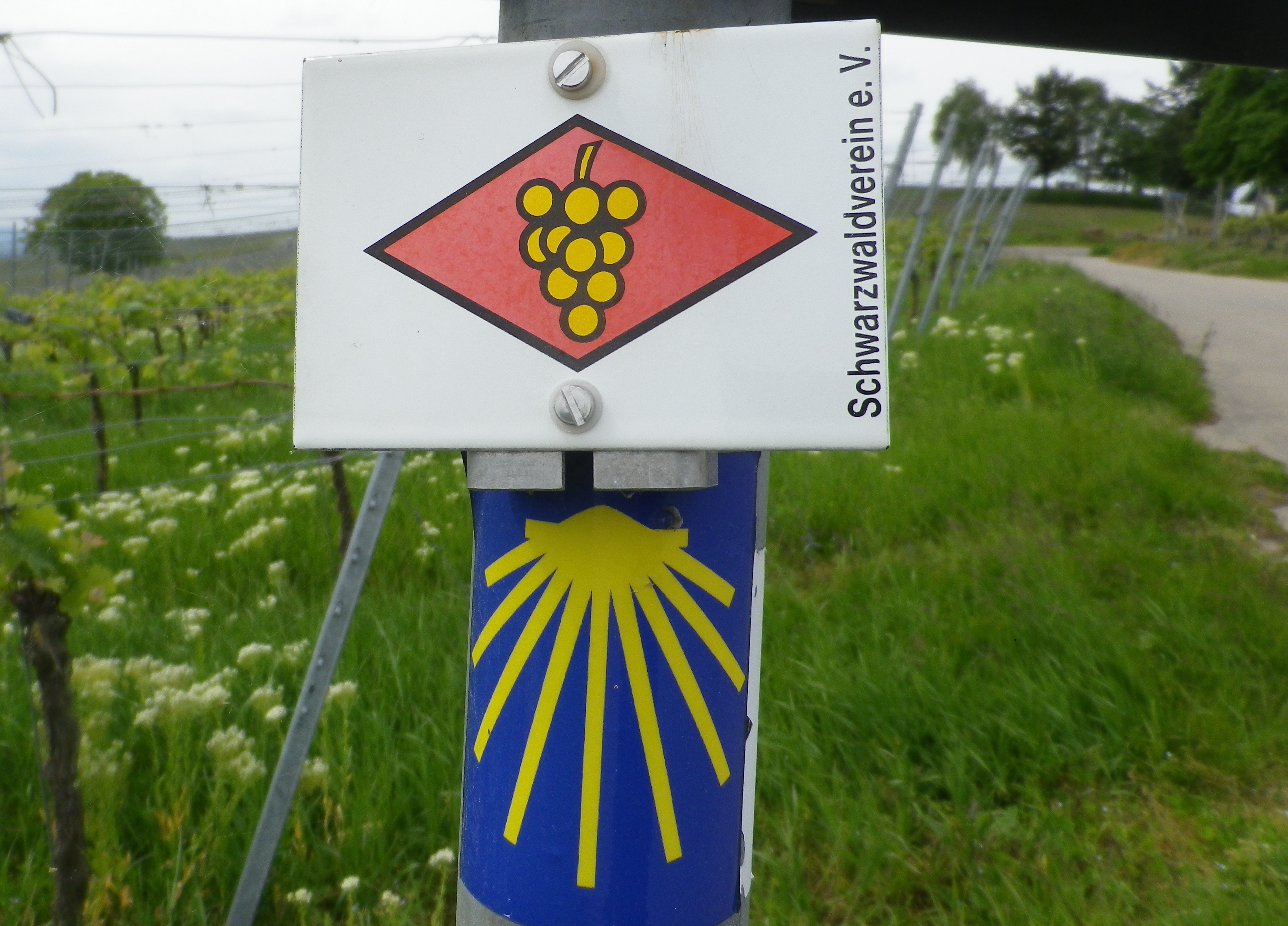
Whereas the Batzenberg had been wide open, entering the Oberduerrenberg felt like entering a vestibule. In this case, the antechamber to the almost mystical forest above the vines. Tucked away in a hollow above Pfaffenweiler, it had a completely different feel to it than the Batzenberg.
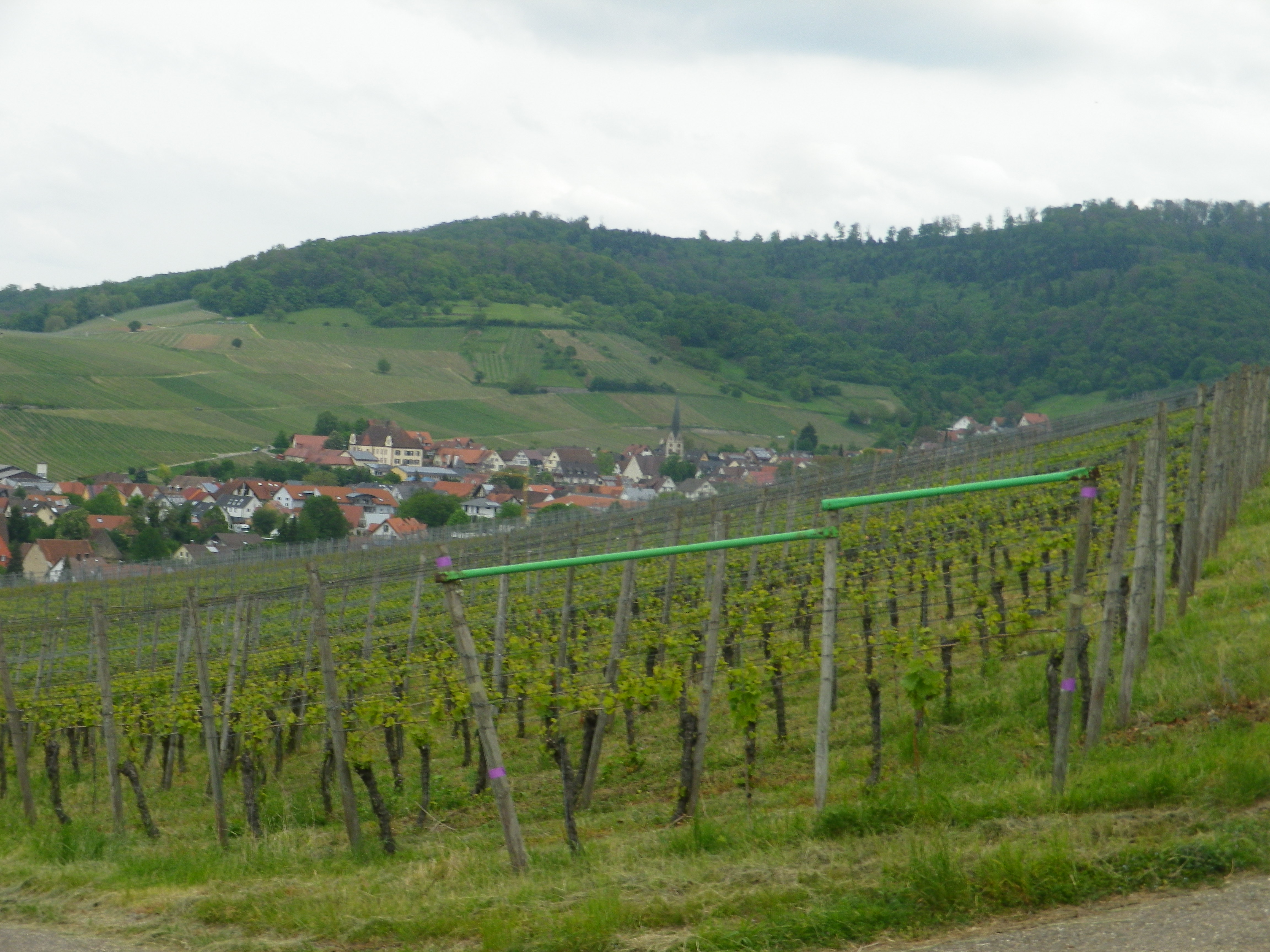
The Hohfirstwald forest has an otherworldly feel. It was very still the day I was there, with thick lush vegetation, even in May. (The name Black Forest comes from this sense of dense darkness enveloping those in it.) Forests are worshipped in Germany: well-maintained, lovingly preserved, and shared communally. Along the trail I saw several cut stone markers delineating each communities’ part of the forest. One had a bear, which denoted (prior) ownership by the Abbot of Saint Gall, in Switzerland. The one with three chalices, presumably filled with wine, caught my attention though!
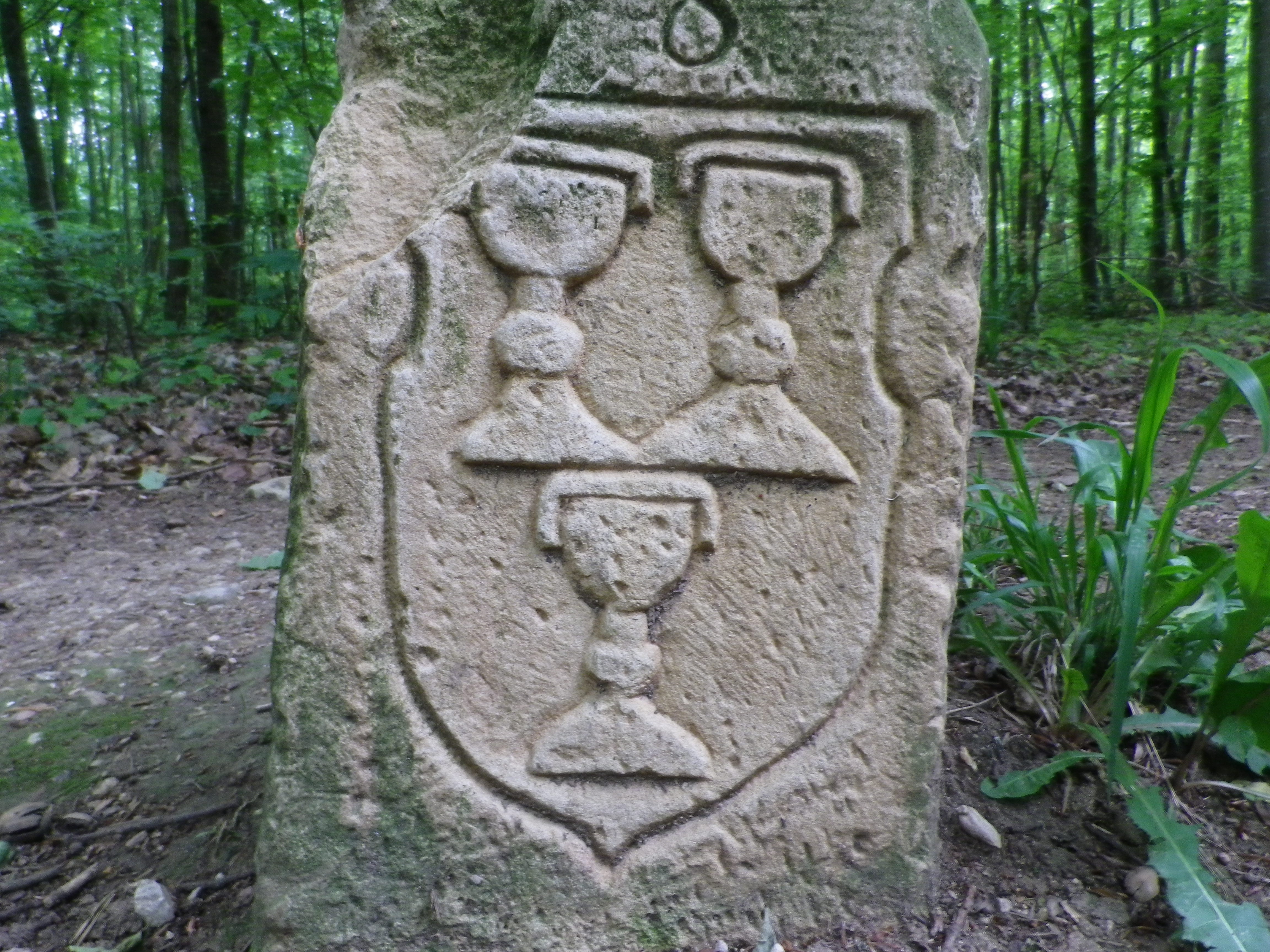
Hoellhagen, Oelberg and Kirchberg, the vineyards just above Ehrenkirchen, opened up on leaving the forest, against the dramatic backdrop of the dark Black Forest mountains to the south. It was an impressive view, even on such an overcast day. Kirchberg references the church just below the hillside. The church authorities originally owned this section of vines presumably, for making the wine for their services.
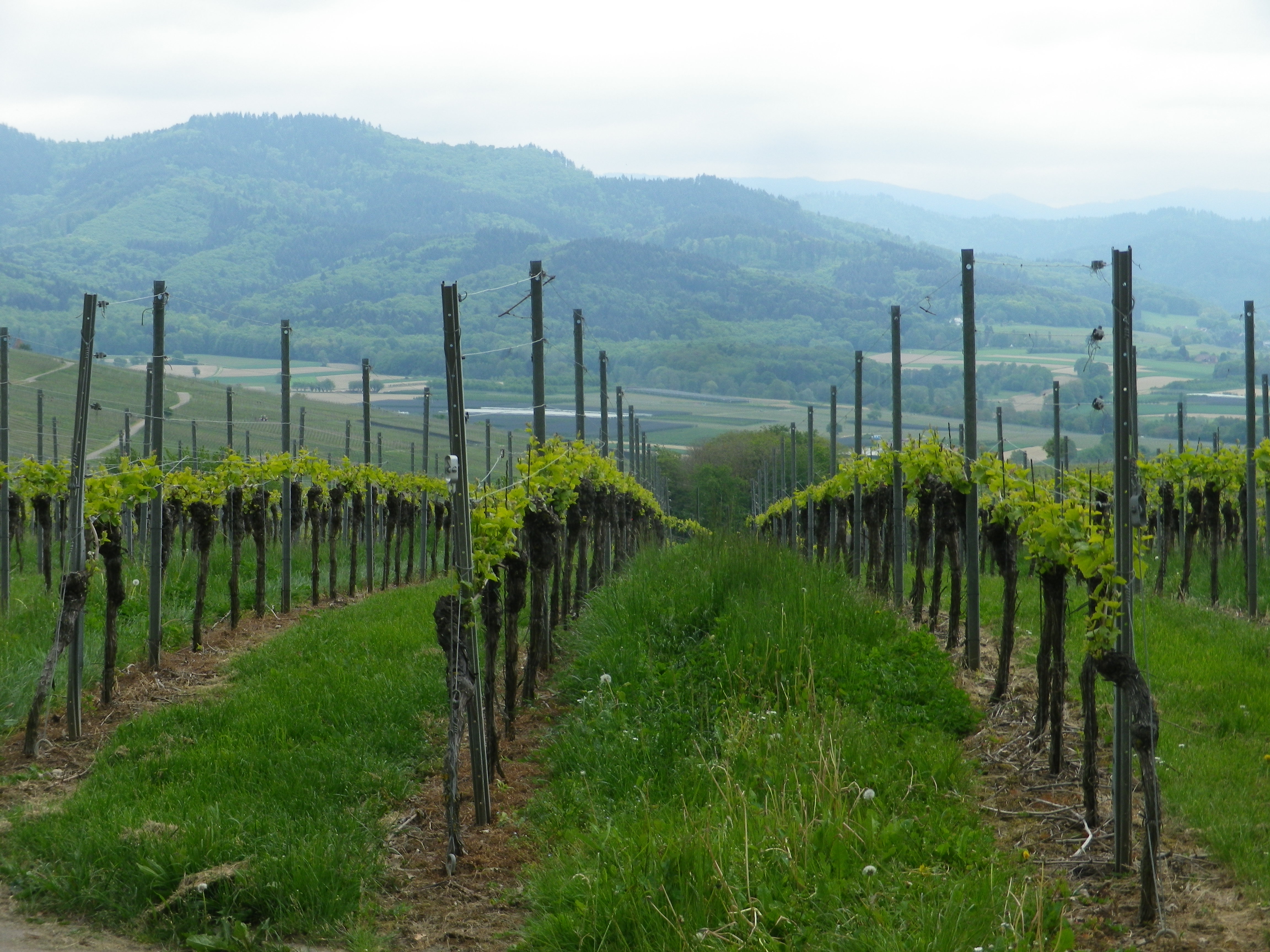
The church itself soon came into view. Sankt Mariae Himmelfahrt is a pilgrimage church, of long date. Even today, a group of volunteers still plan and lead pilgrimages to local sites. (Judging from the departure times, these hikes are not for the weak of heart, and can cover over 40 kilometers a day.) Most of the churches along the ways to the Way, used to offer pilgrims arriving for the night some shelter, food and drink, all of it very modest, if not of poor, quality. My modest hike done, I looked forward to a modern Vinothek, where I could find some good quality wine from this delightful area.
